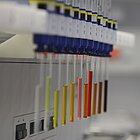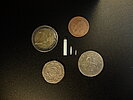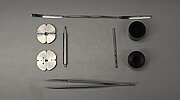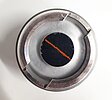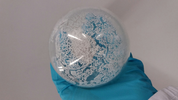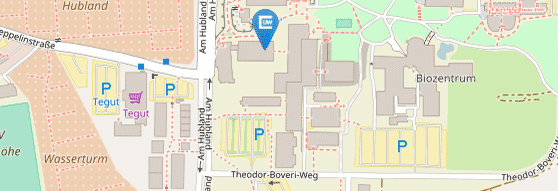Lab Life
We combine NMR spectroscopy with complementary methods such as PXRD and GIPAW (CASTEP) calculations. In the following you can get an overview of some of our characterizing tools.
NMR in Solution
To identify chemical substances and get structural information about them, solution NMR is a useful method. Spatial proximity, binding events and structural information can be revealed, if the compound is soluble in suitable solvent. Deuterated solvents are used for most of the measurements. We use 400 MHz and 600 MHz spectrometers. With increasing frequency, the resolution increases.
To find out more on diffusion NMR experiments and the respective hardware, check-out the page DOSY measurements.
Solid-state NMR
Depending on the investigated system it can be quite difficult to investigate drug polymer formulations by NMR spectroscopy in solution. Due to the rigid core of some nanoparticles, only the predominantly hydrophilic polymer chains, which interact with the solvent (e.g. D2O) can be observed. Using the solid-state NMR probe, which fits to the 600 MHz spectrometer, solid-state NMR measurements can be performed yielding also insights into the micelle, dominant intermolecular interactions and changes in short-range order.
To perform solid-state NMR measurements, first, the solid substance is packed in the rotor with special packing tools. The rotors are used to spin the sample at high frequencies (up to 60 kHz) in the so-called magic angle (54.74 °) to eliminate/reduce the contribution of dipolar, chemical shift anisotropy and quadrupolar interactions. In a next step, the rotor is examined under the microscope to exclude visible damages trying to prevent subsequent (and very expensive) damages during the measurement process. The sample is then transferred into the probe before the measurement can be set up and the data acquired.
PXRD
While NMR is a powerful tool to investigate short-range order phenomena, X-ray diffraction techniques such as powder X-ray diffraction (PXRD) can tell us more about the long-range order (eg. in a crystal lattice). For the PXRD measurements, the investigated compound is aligned on a Si-Wafer. The wafer is placed inside the powder X-ray diffractometer in a way, that the line is perpendicular to the X-ray beam. After 10-15 min the measurement of a first diffractogram is finished. The diffractogram reveals, for example, if the substance is amorphous or (semi-)crystalline and allows comparison between different phases.
Furthermore, more sophisticated analyses such as structure determination from powder diffraction data or pair distribution function are also feasible. We would like to expand our knowledge towards these approaches in the future.
GIPAW (CASTEP) calculations
[1] a) S. J. Clark, M. D. Segall, C. J. Pickard, P. J. Hasnip, M. I. J. Probert, K. Refson, M. C. Payne, Z. Kristallogr. 2005, 220, 567; b) C. J. Pickard, F. Mauri, Phys. Rev. B 2001, 63, 245101; c) J. R. Yates, C. J. Pickard, F. Mauri, Phys. Rev. B 2007, 76, 024401.
Synthesis
To complement and support our research on the structural characterization of small molecules and drug-polymer-formulations we also do organic synthesis of (derivates of) drug molecules and modified polymers. Currently, synthesis and characterization of glycolipids are also performed. The synthesis is a young part of our research project and we are happy to expand it.


